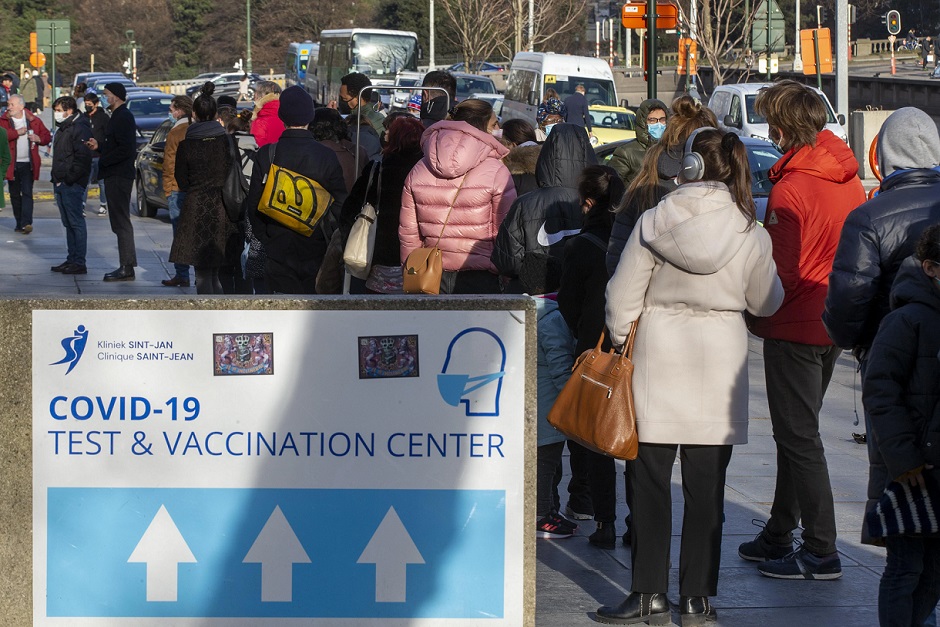The COVID-19 pandemic has entered a more low-intensity phase thanks to effective vaccination programmes but the virus continues to circulate and some precautions are still required, the European Centre for Disease Prevention and Control (ECDC) said on Thursday.
As previously reported, the agency published earlier this week a technical report with lessons learned from the response of Europe’s public health sector. In the report, ECDC highlighted follow-up actions addressing relevant issues which could contribute to improvements in Europe’s pandemic preparedness.
As regards concrete follow-up measures that ECDC itself is implementing as a result of lessons learned, the agency refers to the report where the measures are included under each Lesson Area.
Among others, institutions need to develop systems to collect and analyse different types of data in support of policy decisions and to dynamically adjust measures to control infectious disease outbreaks. An ECDC expert told The Brussels Times that data requirements for surveillance are different depending on the phase of a pandemic.
In the early phases it was essential to have complete epidemiological and clinical description of cases in order to learn the key characteristics of the virus, the expert explained. Many countries were able to provide such data using a reporting form developed jointly between ECDC and WHO.
However, at the same time, there weren’t early health-related data systems (syndromic surveillance) that could timely detect where and at which intensity transmission was occurring, nor were there integrated surveillance systems across the healthcare levels that could provide an ongoing precise estimate of disease severity.
With the wider availability of tests, this was less of an issue because everyone with symptoms could be tested and most public health interventions could be guided by these data. Furthermore, all EU member states implemented systems for rapidly gathering all data at national level and for transmitting them to ECDC weekly.
Once vaccines became available, it was essential on one hand to continue monitoring population trends by clinical outcome, and on the other to rapidly estimate and monitor vaccine effectiveness. Only few hospitals and countries were able to provide high quality data in a timely manner to allow for monitoring of vaccine effectiveness.
This type of data became more and more needed to inform vaccination strategies. It would have helped to have very detailed case-based data on all severe cases to understand population vulnerabilities and to define targeted vaccination programmes and non-pharmaceutical measures.
Furthermore, with the emergence of virus variants, data to allow the early assessment of such variants were not always available in a timely manner. Parameters such as transmissibility, severity, and immunological properties of new variants were however estimated in some countries and the information readily shared.
“In the current situation, not all suspect cases of COVID-19 should be tested, and we can reply on well performant sentinel surveillance systems, integrating data from primary and secondary care, and multiple respiratory viruses.”
How much would need to be invested in intensive care units (ICU) for a better preparedness if we were to be hit by a new pandemic?
There is an ambitious plan to assess the status of member states’ preparedness in the next three years, including through monitoring of health systems capacities. However, at this point this information is not yet available.
Is the danger over or do we still need to observe precautions such as mask protection in crowds, demonstrations and public transport?
The COVID-19 pandemic has entered a more low-intensity phase thanks to effective vaccination programmes and to the very high circulation of the Omicron variant in 2022 which led to many people achieving a higher degree of immunological protection against severe illness.
Currently we are observing waves of infection every 3-4 months, with progressively decreasing peaks. While strict adherence to non-pharmaceutical measures was essential to mitigate the impact of the pandemic in earlier phases, the current prevention strategies should target the most vulnerable to severe infection.
In fact, the SARS-CoV2 virus continues to circulate, and between 500 and 1000 people die of COVID-19 every week in the EU.
It is therefore important to continuously monitor key indicators such as the degree of transmission in the community, hospitalisation and mortality rates, and vaccine effectiveness, in order to rapidly implement adjustments to the current strategies, should signals of increased impact emerge.
It is also advisable to reduce the risk of infection for people residing in hospitals or long-term care facilities by maintaining rigorous infection prevention and control practices.
Therefore, there is a need for continued collaboration and coordination between governments, health organizations, and communities to effectively address the pandemic and its impact on public health.
During the pandemic the European Commission often referred to the ECDC and its scientific opinions as an input to its decision-making. ECDC replied that the communication between ECDC and the Commission worked as desired from the very start of the pandemic.
M. Apelblat
The Brussels Times

